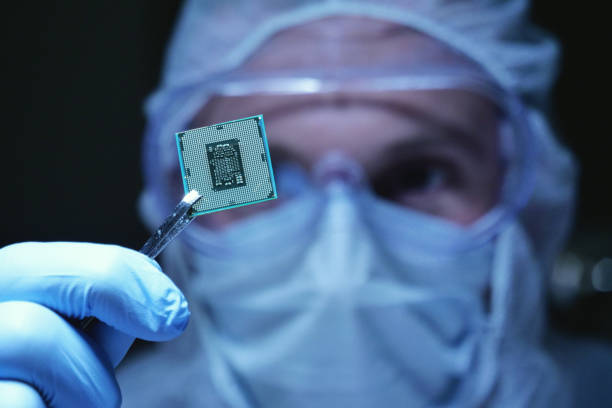Harnessing Millimeter Wave Technology for Next-Generation Connectivity
The telecommunications landscape is on the brink of a revolutionary shift, with millimeter wave (mmWave) technology poised to redefine the boundaries of wireless communication. This cutting-edge innovation promises to unlock unprecedented levels of speed, capacity, and low latency, paving the way for transformative applications across industries. But what exactly is mmWave, and how will it reshape our connected world?

The concept of using mmWave for communication isn’t new; it has been explored in various forms since the 1890s. However, recent advancements in semiconductor technology, antenna design, and signal processing have made it feasible to harness mmWave for consumer applications. This breakthrough has caught the attention of telecom companies, tech giants, and governments worldwide, sparking a race to develop and deploy mmWave-based solutions.
The Promise of Millimeter Wave Technology
The potential of mmWave technology extends far beyond faster download speeds for smartphones. Its unique characteristics open up a world of possibilities across various sectors:
-
Ultra-high-speed wireless broadband: mmWave can deliver fiber-like speeds over the air, potentially revolutionizing last-mile connectivity in urban areas.
-
Enhanced mobile experiences: With its massive capacity, mmWave can support densely populated areas, ensuring seamless connectivity even in crowded stadiums or busy city centers.
-
Industrial automation: The low latency of mmWave communications enables real-time control of robotic systems, enhancing precision and efficiency in manufacturing processes.
-
Augmented and virtual reality: mmWave’s high bandwidth and low latency are crucial for delivering immersive AR and VR experiences, particularly in mobile settings.
-
Autonomous vehicles: The technology can support the high-speed, low-latency communication needed for vehicle-to-vehicle and vehicle-to-infrastructure connectivity.
Technical Challenges and Innovative Solutions
While mmWave technology offers tremendous potential, it also presents unique challenges that researchers and engineers are working tirelessly to overcome:
-
Limited range: mmWave signals have a shorter range compared to lower frequencies and are easily blocked by obstacles. To address this, companies are developing advanced beamforming techniques and dense small cell networks.
-
Atmospheric absorption: Certain mmWave frequencies are susceptible to absorption by atmospheric gases and rain. Researchers are identifying optimal frequency bands and developing adaptive modulation schemes to mitigate these effects.
-
Hardware complexity: Designing and manufacturing mmWave-compatible devices is more challenging due to the high frequencies involved. However, advancements in semiconductor technology and integrated circuit design are making mmWave components more compact and cost-effective.
-
Power consumption: Operating at such high frequencies requires more power, which can be a concern for mobile devices. Engineers are developing energy-efficient mmWave chipsets and implementing intelligent power management systems to address this issue.
Regulatory Landscape and Spectrum Allocation
The successful deployment of mmWave technology heavily depends on supportive regulatory frameworks and efficient spectrum allocation. Governments and regulatory bodies worldwide are recognizing the importance of mmWave in driving innovation and economic growth. As a result, many countries are taking steps to make mmWave spectrum available for commercial use:
-
United States: The Federal Communications Commission (FCC) has been at the forefront of mmWave spectrum allocation, making significant portions of the 24 GHz, 28 GHz, 37 GHz, 39 GHz, and 47 GHz bands available for 5G and other advanced wireless services.
-
European Union: The European Commission has harmonized the 26 GHz band for 5G use across member states, with ongoing discussions about additional mmWave bands.
-
Asia-Pacific: Countries like Japan, South Korea, and China are actively allocating mmWave spectrum for 5G and beyond, focusing on bands such as 28 GHz and 39 GHz.
-
Global coordination: The International Telecommunication Union (ITU) is working to harmonize mmWave spectrum usage globally, facilitating international roaming and economies of scale in device manufacturing.
Real-World Applications and Early Deployments
As mmWave technology matures, we’re beginning to see its real-world impact across various sectors:
-
Fixed Wireless Access (FWA): Telecom operators are using mmWave to deliver high-speed broadband to homes and businesses, particularly in areas where fiber deployment is challenging or cost-prohibitive.
-
Smart cities: mmWave is enabling advanced urban infrastructure, including intelligent traffic management systems, high-definition video surveillance, and smart utility metering.
-
Healthcare: The technology is supporting telemedicine applications, allowing for high-quality video consultations and remote diagnostics.
-
Entertainment and media: mmWave is enhancing live event experiences through ultra-high-definition video streaming and interactive AR applications.
-
Education: Universities and research institutions are leveraging mmWave for high-speed campus networks, facilitating advanced research and collaborative learning environments.
The Future of Millimeter Wave Technology
As we look ahead, the potential applications of mmWave technology continue to expand. Researchers are exploring even higher frequency bands, venturing into the terahertz range, which could unlock even greater capacities and enable new sensing capabilities. Additionally, the integration of mmWave with other emerging technologies, such as artificial intelligence and blockchain, could lead to innovative solutions we have yet to imagine.
The journey of millimeter wave technology from a theoretical concept to a transformative force in telecommunications is a testament to human ingenuity and perseverance. As we continue to push the boundaries of what’s possible in wireless communication, mmWave stands as a beacon of progress, promising to connect our world in ways we never thought possible. The challenges are significant, but the potential rewards are immense, making millimeter wave technology a critical area of focus for the telecommunications industry in the years to come.





